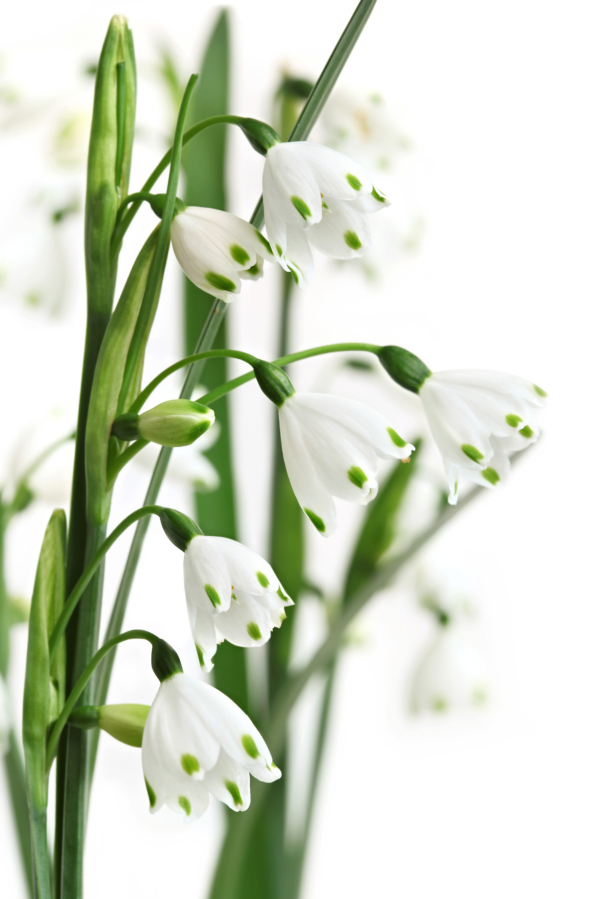This warm winter has not only confused plants into bearing flowers way ahead of normal, it has been troublesome for gardeners too. I faced that last week when a stranger whipped out her phone to show a photograph of a flower she had seen and now wanted.
“What is it?” she asked, adding that someone else thought it was snowdrops.
It wasn’t. The lovely clump on her phone camera was snowflakes, and like many other plants, blooming well before its time.
Snowdrops and snowflakes are often confused — and not just because of the similarity of their names.
They bear white, bell-shaped flowers with a touch of green that nod toward the ground. Both grow from very small bulbs, bought and planted in the fall and they are usually long-lived.
But they belong to two different species of plants. The common snowdrops we plant are botanically Galanthus nivalis. The snowflakes are botanically Leucojum aestivum. The source I use for names and spelling, the “American Horticultural Society A-Z Encyclopedia of Garden Plants,” calls this the “summer snowflake,” but I think we in the Piedmont, N.C., have a hard time thinking of this as a summer flower, especially when it blooms so early.
Typically, snowdrops bloom in January or early February, making it a true winter flower that is greatly appreciated when other things are still dormant. It stays short, just about 4 inches tall, and bears a small flower under 1 inch long at the tip of each stem. A tinge of green marks the center of each glistening white bloom. It is fresh and lovely and seems to withstand all kinds of winter weather. I have seen them in bloom surrounded by ice and snow.
The snowflake typically blooms in April and is always welcome for its contrast with the bigger, bolder late daffodils and early tulips. The little bell-shaped flowers are distinctive for the green dots around the tips of the flower petals. Each stem bears more than one flower — sometimes six or eight — at the top of stems, which are 18 to 24 inches tall. This is a very worthy plant, and can hold its own even with the competition of major spring flowers looking their best and brightest.
While snowflakes go very well in mixed bouquets for vases of medium height, snowdrops are so short they are best left unpicked outdoors.
Since this is the enjoying season instead of the planting season for snowdrops and snowflakes, look for them with selections of bulbs at garden centers and in catalogs this fall.
And don’t fear that you have to make a choice. Pick some of both. And if you want to remember the names easily, just think snowdrops are earlier and shorter, snowflakes are later and taller.



